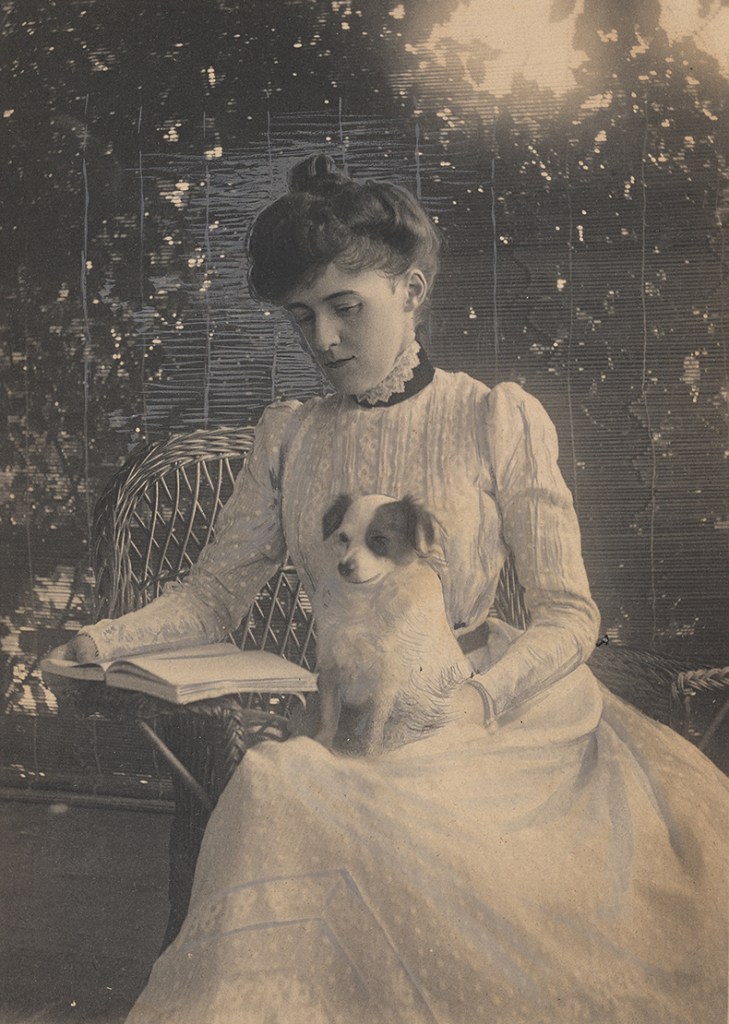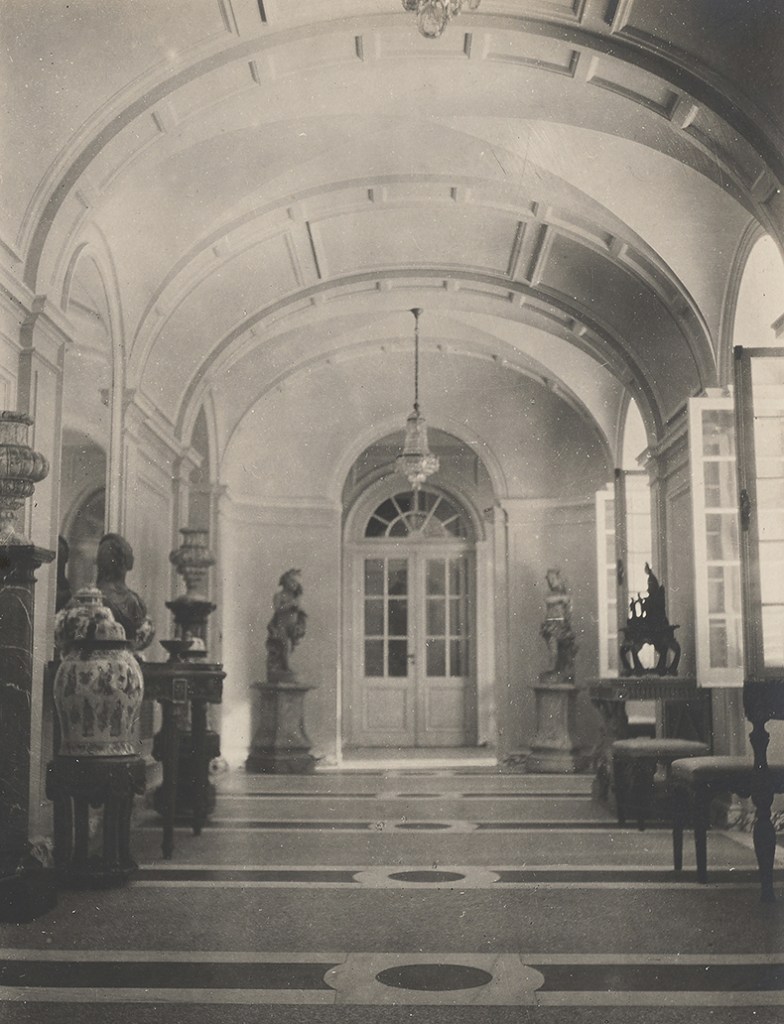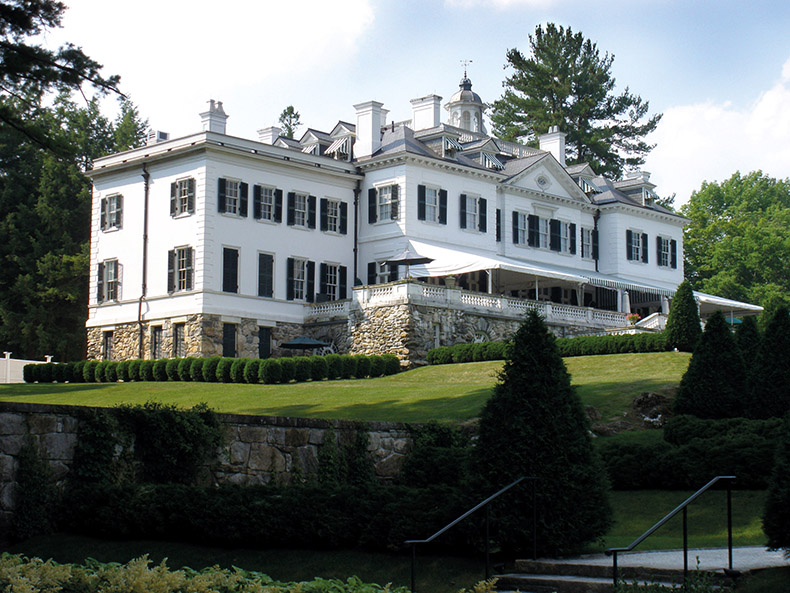From the January 2025 issue of Apollo. Preview and subscribe here.
Undine Spragg has bad taste. In the ‘Looey’ suite she insists her parents rent at the fictional Hotel Stentorian, ‘wainscotting of highly varnished mahogany’ is only the first strike. Walls hung with ‘salmon-pink damask’ suggest rococo pretensions that ‘oval portraits of Marie Antoinette and the Princess de Lamballe’ ensure we don’t miss. Crowning these indignities is a ‘gilt table with a top of Mexican onyx’ surmounted by – the horror! – a ‘palm in a gilt basket tied with a pink bow’. Can the merciless arriviste of Edith Wharton’s The Custom of the Country (1913) buy the taste she wasn’t born into? The answer turns out to be no – but Undine triumphs anyway.
Though her own rooms were inherited, Wharton knew all too well the trauma of childhood decor. She was born into that most storied of clubs, Old New York, but even her family’s patinaed cash could not ensure good taste. Photographs of the brownstone on West 23rd Street where a young Edith Newbold Jones lived teem with roses and carnations cresting over every surface – walls to curtains, fauteuil to settee. Gilt moulding, reflected in heaps of glassware and in the swags of a crystal chandelier, would have bathed the room in ersatz lustre.
Edith Wharton photographed in 1897. Photo: Edith Wharton Collection, Yale Collection of American Literature, Beinecke Rare Book and Manuscript Library

The Mount, a stately three-storey house nestled in the Berkshire Hills, is the author’s riposte to the diamond-draped rooms of her youth. Among white walls and terrazzo floors of her own design, she could safely shudder at the memory of ‘curtains, lambrequins, jardinières of artificial plants, wobbly velvet-covered tables littered with silver gew-gaws, and festoons of lace on mantelpieces’. Now a museum, The Mount is once again a sanctuary for New Yorkers looking to escape all that – especially in the fall, when towering sugar maples wrap the estate in brilliant shades of orange and gold. When I visited in October, there were no tchotchkes in evidence – though this, I learned, had less to do with Wharton’s collecting proclivities than with the fact that the home’s contents were dispersed long ago. Period furniture and biographical displays help to fill out the rooms, but a spartan appearance seems to suit the author’s austere ambitions.
Upon her marriage to Teddy Wharton at the age of 23, Edith plotted her way out of Gilded Age New York. Tours through Europe did not flatter the dark and narrow houses of her hometown, stuffed as they were with ‘smug and suffocating upholstery’. More to her taste were the airy palazzos of Florence and Ferrara, the delicate decor of the Petit Trianon, and picturesque English estates. Her travels confirmed her belief that the ‘golden age of architecture’ had given way to the ‘gilded age of decoration’. She meant it literally. In her first published book, The Decoration of Houses (1897), which was both an invective against late 19th-century design and a handbook for its redemption, Wharton argued that surface had taken structure for a ride. Tapestries, flocked wallpaper, elaborate moldings and, of course, gilding, all bloated rooms and masked their architectural logic. It was nothing more, she declared, than a ‘varnished barbarism’.
After their travels, Edith and Teddy settled in Newport. She lasted only a few seasons before she could suffer society no more. Families such as the Vanderbilts, who reigned from their 70-room seat at The Breakers, were, Edith complained, ‘entrenched in a sort of Thermopylae of bad taste, from which apparently no force on earth can dislodge them’. It was bad news for an author who claimed ugliness as a source of ‘inarticulate misery’. Wharton wanted out. On a visit to Lenox, a resort town in Massachusetts, in 1901, she found the ideal place to create her most exacting aesthetic fantasies. One hundred and thirteen acres and $124,000 later, she and Teddy moved into The Mount, where the couple would live from 1902 to 1911. It was, Wharton recalled, her ‘first real home’, and it was also the place where she first experienced literary success; The House of Mirth (1905), an instant hit, was written from the third-floor bedroom overlooking the hills where she would set Ethan Frome (1911).
The hallway at The Mount, photographed c. 1902–11. Photo: Edith Wharton Collection, Yale Collection of American Literature, Beinecke Rare Book and Manuscript Library

If ornament was out, eclecticism was in. The Mount, an homage to classical taste, tips into pastiche. Henry James, a frequent guest, described it as an ‘exquisite and marvelous place, a delicate French chateau mirrored in a Massachusetts pond’. French, Italian and English sources certainly make curious bedfellows in the Berkshire landscape, and if The Mount’s west side combines an H-shaped ‘Wrenaissance’ elevation with the white-and-green palette of New England’s colonial style, the east side traces its parentage to Settignano and Versailles, boasting a vine-wrapped pergola and a scrupulously manicured allée. Artifice was baked in, too. To preserve the symmetry on the west facade, shuttered ‘windows’ hide the bedrock that renders portions of the ground floor useless.
For Edith, The Mount was more than a passion project. It was a cri de cœur against a country’s decadence – a sensibility that originated, she alleged, with its elite. But wherein lay the problem also lay the solution. ‘It is a fact recognized by political economists,’ she wrote, that ‘changes in manners and customs, no matter under what form of government, usually originate with the wealthy or aristocratic minority, and are thence transmitted to the other classes’. From America’s peerage – the Old New York set and those nouveaux riches who, like Undine, aspired to get there – ‘every good molding, every carefully studied detail […] will in time find its way to the carpenter-built cottage’.
There’s a fair amount of irony in what happened next. After the Whartons sold the house in 1911, it passed to private families, was turned into a girl’s boarding school, and ended up as the squat and stage of a Shakespearian troupe. All the while, it deteriorated. The culprit? The stucco with which Edith had sought to imitate country-house stone at a fraction of the cost. Permeable to moisture, it was a poor choice for New England’s harsh winters. Leaks, combined with a wooden frame creaking under the weight of its designer’s ambitions – and her heavy stone flooring – brought the house to the brink of collapse before steel trusses (and millions of dollars) were put into its restoration, which was completed in 2012. The Mount turned out to be no exception to its age – and Wharton’s decoration, just gilding by another name.
The Mount in Lenox, Massachusetts, designed by Edith Wharton, who lived there from 1902 to 1911. Photo: Catherine Mallette/Fort Worth Star-Telegram/Tribune News Service via Getty Images

From the January 2025 issue of Apollo. Preview and subscribe here.


